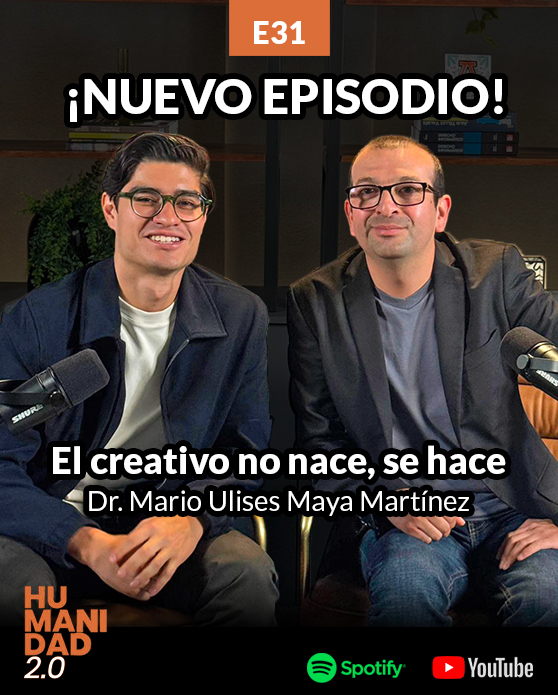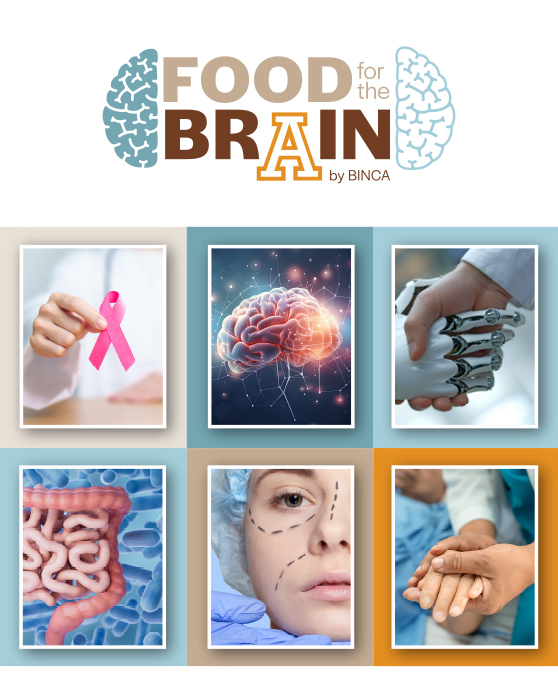
July 11, 2025
Author: Luz del Carmen Ramírez Zazueta
Versión en español
Introduction
The introduction of new technologies and communication media has triggered major transformations in today’s societies. These changes affect social bonds, employment, the concept of work, and needs within the hierarchy of motivation. They have also impacted both individual and collective identity, leading to tangible psychological, social, and political effects.
On Human Identity
The raw material that makes up human beings consists of bioelements, which also constitute all living matter. Specifically, the elements in the human body—carbon, hydrogen, oxygen, and nitrogen—are known as the “basic bioelements of life.” The mapping and complete sequencing of the human genome provided an in-depth internal view of how each human life is shaped and revealed the similarity among organisms, establishing the unity of life.
Identity is also configured as a system of cultural symbols and values through which humans relate to their environment in everyday life. This system is in constant transformation and recreation, giving the concept of identity a composite and dynamic character.
A classic example that illustrates the persistence of identity despite change is the Ship of Theseus problem. This ontological dilemma poses the question: if a ship gradually replaces all of its parts, is it still the same ship? This paradox invites us to reflect on the continuity of identity over time, even when its material or symbolic components are altered.
Thus, the sense of identity in human beings persists as long as they are able to give otherness a sense of continuity, integrating the ability to continue feeling like the same self3.
Bioinformatics
In addition to the Human Genome Project, another scientific advancement that has significantly influenced our understanding of human identity is bioinformatics, along with other fields of technology. Bioinformatics, considered a key driver in the development of genomics, is defined as the research, development, and application of computational tools for the analysis of biological, medical, behavioral, and health data.
The impact of bioinformatics on our understanding of humanity has been appreciated at three levels: collective, individual, and genealogical, thus expanding how we conceptualize our identity through multiple dimensions1.
Natural Intelligence
A highly subjective term, intelligence was defined by 52 researchers in the “Mainstream Science on Intelligence” (1994) as: a very general mental capability that, among other things, involves the ability to reason, plan, solve problems, think abstractly, comprehend complex ideas, learn quickly, and learn from experience. It is not limited to learning from books, academic aptitude, or test-taking skills. According to the American Psychological Association, intelligence refers to intellectual functioning—always in reference to natural intelligence.
Artificial Intelligence
Understanding the brain remains a work in progress. The path has not been linear, as both researchers' interest and the institutions funding these studies have experienced ups and downs. The word "robot" dates back to 1920, coined by Czech writer Karel Čapek in a play, from the Czech robata, meaning servitude. Isaac Asimov, in the 1940s, outlined his famous laws of robotics in the short story Runaround, offering a normative framework between humans and machines.
In 1950, British mathematician Alan Turing—renowned for cracking codes in World War II and a member of the exclusive Ratio Club, which excluded professors to maintain a youthful, curious, and bold spirit—introduced his famous “imitation game” in an article in Mind. This proposal had a profound philosophical impact, as it raised serious questions about the possibility of machines being able to think.
Another landmark moment in AI development was the 1956 Dartmouth Workshop. A group of experts led by John McCarthy—among them Nobel laureate John Nash—launched a new era of science and research into key areas for advancing artificial intelligence. Topics discussed included automated computing, programming languages, neural networks, computational complexity, machine self-improvement, abstraction, randomness, and creativity. This gathering ignited a wave of ideas that laid the theoretical and technical foundations for modern AI4.
Sense of Danger
In computer science, artificial intelligence refers to a discipline and set of cognitive and intellectual capacities expressed by computer systems or algorithmic combinations, aiming to create machines capable of emulating human intelligence.
In Executive Intelligence, Spanish philosopher José Antonio Marina shares an anecdote about chess, a highly rational game with strict time limits. In 1989, after defeating IBM’s Deep Thought, Russian champion Garry Kasparov remarked that the machine “had no sense of danger.” The team of psychologists working with Russian chess players emphasized developing precisely that “sense of danger”: the ability to instantly identify the weak point on the board.
Although Kasparov later defeated Deep Blue, he was eventually overcome by a more advanced version called Deeper Thought, which had refined its evaluation systems.
The lesson from this story highlights a perhaps underestimated aspect of human intelligence: the sense of danger, a biological and innate function linked to working memory, which has historically given humans a decisive edge over machines2.
Major Myths About Artificial Intelligence
Myth | Fact | |
| 1 | Achieving superintelligence by 2100 is impossible | It could happen in decades, centuries, or never |
| 2 | Superintelligence by 2100 is inevitable | Experts disagree and simply don’t know |
| 3 | Only Luddites worry about artificial intelligence | Many top AI researchers are concerned |
| 4 | The concern is that AI will become malevolent or conscious | The concern is that AI will become competent, with goals misaligned with ours |
| 5 | Robots are the main concern | Misaligned intelligence is the main concern |
| 6 | AI cannot control humans | Intelligence enables control; we control animals by being smarter |
| 7 | Machines cannot have a goal | A heat-seeking missile has a goal |
| 8 | Superintelligence is just a few years away | It’s at least decades away, but that time may be needed to make it safe |
Table 1.1 Main Myths About Artificial Intelligence
Source: Based on “Benefits and Risks of Artificial Intelligence”, The Future of Life Institute, https://bit.ly/3WSZ6cB.
Impact of Artificial Intelligence on Emotions and Human Relationships
One of the defining traits of the human being is will. The role of will in human life—through its intensity and impulses—is to give meaning to existence and to orient life toward a planned or unplanned project. Humans experience their individuality through will. There are arguments and counterarguments about how technology has altered human relationships, but it is undeniable that scientific innovations have changed human behavior and emotional responses.
Conclusions
Starting from the premise that a poor decision made today can affect future generations, bioethics urges us to reflect on the traits that enable us, as a species, to aspire to permanence on this planet. These include adaptability, cooperation, innovation, and habitat protection—all necessary to achieve sustainable development, which can only be attained through collective effort.
In this context, big data—the raw material of artificial intelligence—is a human creation. Therefore, it is also humanity’s responsibility to establish appropriate regulatory frameworks for its use, especially at the international level. The dissemination and discussion of these topics, where social sciences, biological sciences, and computational technologies intersect, becomes an unavoidable bioethical imperative.
References
- González Valenzuela, J. & Linares, J. (2013). Diálogos de Bioética. Nuevos Saberes y valores de la vida. Mexico: FCE, UNAM, FfyL. pp. 74–75.
- Marina, J.A. (2024). La inteligencia ejecutiva. Spain: Planeta. p. 139.
- Quirós, E.F. (2010). Cited in "Educación en línea: El concepto de identidad", Dossier pedagógico de Vivre ensemble autrement (October 2002).
- Sarangi, S. & Sharma, P. (2025). Inteligencia Artificial: Evolución, ética y políticas públicas. Mexico: Trillas. pp. 29, 35–37.
- Svante, P. (2001). The human genome and our view of ourselves, in Science, 291, pp. 676–677.
Luz del Carmen Ramírez Zazueta is a physician specialized in integrated medicine, dedicated to public and private clinical practice in emergency care, blood bank services, and inpatient medicine since 2015. She is currently pursuing a Master’s degree in Bioethics and Law at the Institute of Ethics and Therapy of Jalisco. She serves as both member and current president of the Hospital Ethics Committee at the General Hospital of the State of Sonora since 2021. She currently coordinates the medical bioethics seminar on the Bioethics and Environment platform. She is also a member of the College of Specialists in Integrated Medicine (CONAEMI). Academically, she teaches the ethics and clinical bioethics module for medical residents at the HGE Sonora, a course endorsed by UNAM.
The views expressed in this blog are solely those of the authors and do not necessarily reflect CADEBI’s official position. As an institution committed to inclusion and plural dialogue, CADEBI promotes and disseminates a diversity of voices and perspectives, firmly believing that respectful and critical exchange enriches our academic and formative work. We welcome all comments, responses, or constructive criticism.
More information:
Centro Anáhuac de Desarrollo Estratégico en Bioética (CADEBI)
Dr. Alejandro Sánchez Guerrero
alejandro.sanchezg@anahuac.mx





